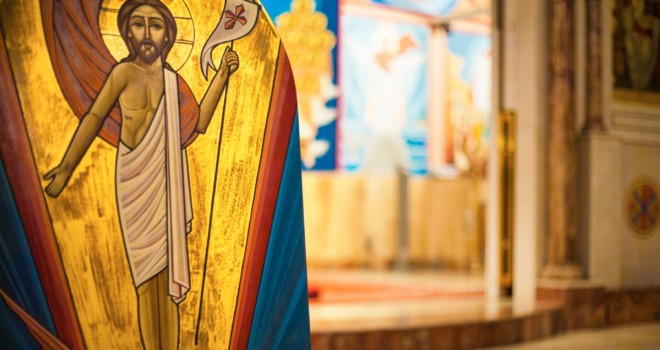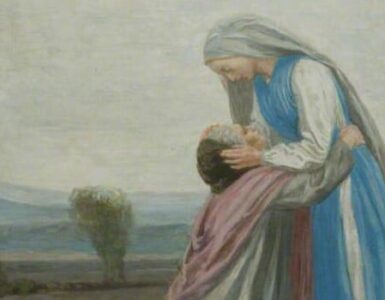On Sunday, November 30, 1986, Saint John Paul II reminded his audience in Australia of the great blessing that all Christians share and how they should carry it with joy: “Do not abandon yourselves to despair. We are the Easter people and hallelujah our song.” The word “abandon” is of special significance, for it appears in Dante’s Divine Comedy when he places at the gate of hell the words, “Abandon hope ye who enter here” (Lasciate ogni speranza, voi ch’intrate). For very good reason, George Weigel’s definitive biography of Pope John Paul II is titled Witness to Hope.
John Paul, therefore, clearly delineates the line that separates Heaven from Hell. If we are without hope, we are already in Hell. The Resurrection, which Easter celebrates, strengthens our hope and paves our journey to heaven. More than three decades have passed since Saint John Paul II uttered these words, though, like much of what the late pontiff has stated, they are, like Easter itself, timeless. At the same time, John Paul’s words have additional meaning in the year 2022 when the burden placed in Catholic bishops is particularly heavy. In his book, Rise, Let Us Be On Our Way, published a year before he passed away in 2005, he appeals precisely to bishops. “Echoing the words of our Lord and Master [‘Rise and do not be afraid’ (Matt. 17:7)], I too say each one of you, dear brothers in the episcopate: ‘Rise, let us be on our way!’ Let us go forth full of trust in Christ. He will accompany us as we journey toward the goal that He alone knows”.
The issue of life is at the forefront, especially in the United States, when pro-and anti-life forces are geared for an all-important battle. Easter emphasizes the fundamental significance of life. This emphasis has carried over into the secular world in the form of Easter eggs, lilies, Easter parades, and that paragon of fecundity — the rabbit. A seventeen century German story tells of the Easter bunny bringing happiness to children by bringing them eggs, candies, and pastries. Some youngsters prepared small nests to accommodate their Easter visitor.
The Polish tradition of making “pisanki,” or decorated Easter eggs, is approximately 1,000 years old. The most outstanding examples of these painted eggs are exhibited in museums or held by private collectors. The egg, of course, symbolizes life in its very early stages, and attests to the importance of life in its earliest form. While the egg has received particular importance in the Polish tradition, it does have universal recognition as a symbol of life and fertility, creation and resurrection.
As “Easter people,” this greatest Feast Day in the Catholic calendar should unite our celebration of the Resurrection of Christ, with our appreciation of life in all its forms. Mary McClusky works with the pro-life arm of the U.S. Conference of Catholic Bishops. “Imagine,” she writes, “a woman who has had an abortion watching children frolic through the grass at an Easter egg hunt. She may silently ache for the child she’ll never carry in her arms. Her focus is on the tomb, not on Jesus’ victory over sin and death and the joy of the Resurrection.” Life, whether after death or at its origin, is to be honored and cherished. One cannot properly celebrate Easter without celebrating the fundamental importance of all forms of human life.
Easter in the year 2022 celebrates Christ’s victory over death and opening the doors of heaven, but it also serves as an encouragement for all bishops to “Rise, Let Us Be On Our Way,” and for all people to rejoice in the gift of life that God has generously given us.
✠
Photo by Rafik Wahba on Unsplash














